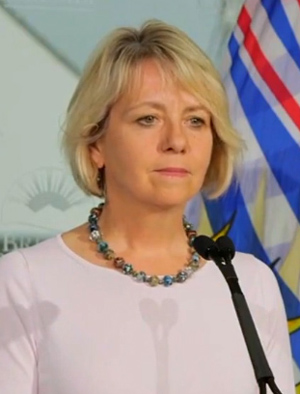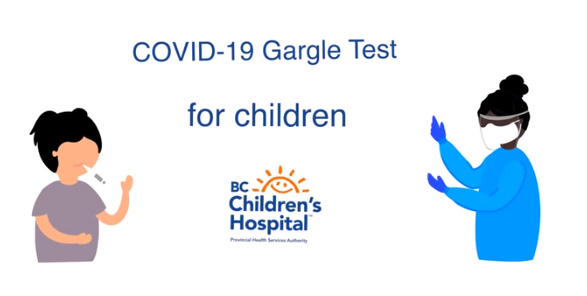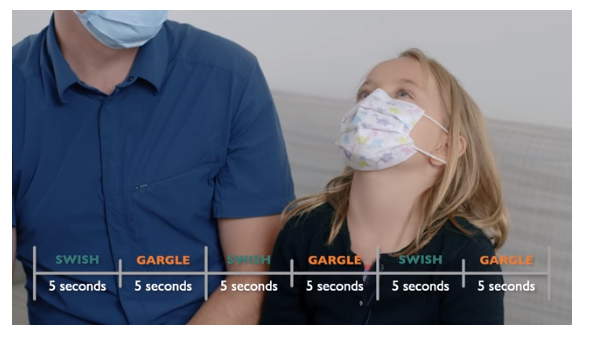
Thursday September 17, 2020 | VICTORIA, BC
by Mary P Brooke, B.Sc., editor | Island Social Trends
There has been a slow but steady uptick in COVID-19 cases among children each day during the summer in BC, and now also in September. As of today there have been 605 cases in people ages newborn to 19 years.
Getting tested for COVID-19 has until now involved a nasal swab, which many people find uncomfortable and usually requires a health-care professional or trained personnel to administer the test.
Good news for children and their parents… there’s now an easier test for COVID-19 in BC!
Gargle test is less invasive:
The gargle test designed to capture a saliva sample simply involves gargling a saline solution then spitting it into a collection tube.

So far, this collection method will be available only for use by children and youth (up to age 19 years), apparently given limited preliminary supply of funnel-shaped vials from the local BC manufacturer.
“It’s a collection method not used anywhere else, so products have had to be developed for this,” says Libby Brown, Director of Corporate Communications, Provincial Health Services Authority.
The Public Health Lab at the BC Centre for Disease Control (BC CDC) together with the BC Children’s pathology team developed this new collection method. Both this new method and the nasal swab method are demonstrated in videos for children on the BC CDC website.
“We have as many testing kits as we need for the time being, to test school children and youth from Kindergarten to Grade 12. There is no shortage of ingredients or reagents for this test,” said Brown.
Dr Henry likes the test:
Provincial Health Officer Dr Henry was excited to highlight the gargle test in her live media briefing today.

She said that the focus is on children with this spit-test because of limited supply, but also due to the ease of use by parents with school-age children or older kids and teens on their own.
As well, there is less use of health-care worker time, which adds up to a good cost saving as well efficient use of skilled nursing staff for other activities.
Adults who require a COVID-19 test will have to make do with the nasal swab test still for now.
Easy to do, with a few rules:
There is still a bit of management around using this test method. Younger children in particular are asked to practice gargling with water at home at least two hours prior to the test.
Also, anyone taking the test should not eat, drink, chew gum or brush their teeth at least one hour before the test.

The test can be done while sitting or standing.
Everyone in the room needs to be wearing a face mask.
Saline is squirted into the person’s mouth. Don’t swallow, talk or spit out the saline (salty water) during the test. Gargling goes on for about 20 seconds. This might not be an entirely reliable procedure with younger children.
When to take your child for a test:
Parents and caregivers should assess their child daily for key symptoms of illness before sending them to school. Appendix C of the Public Health Guidance for K-12 Schools provides an example of a daily health check.
As explained on the BC CDC website, if your child has one symptom that persists for more than 24 hours, a fever, or two or more symptoms from the list, they should be assessed to determine if they should seek testing for COVID-19. You can use the COVID-19 assessment tool to determine if your child should seek testing.
Testing is available for anyone with cold, influenza or COVID-19-like symptoms.
![Hon John Horgan, MLA [Langford-Juan de Fuca]](https://islandsocialtrends.ca/wp-content/uploads/2020/04/LFDJdFConstituency-WSVN-covid-banner-728x90-web.jpg)





